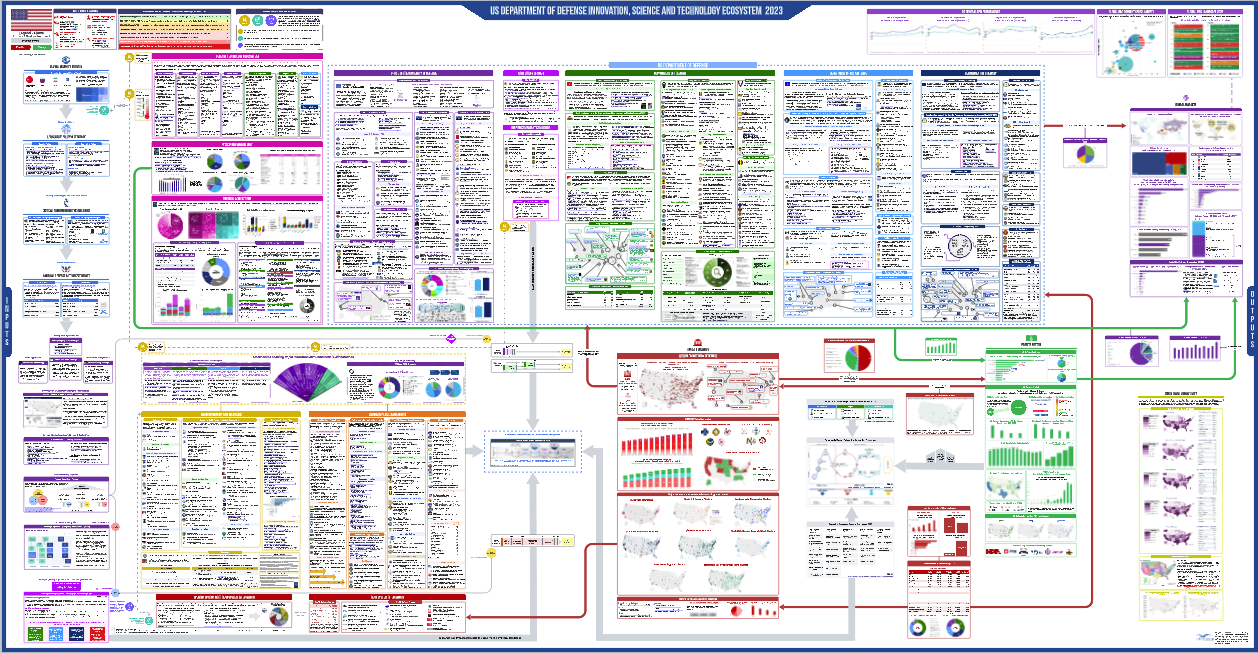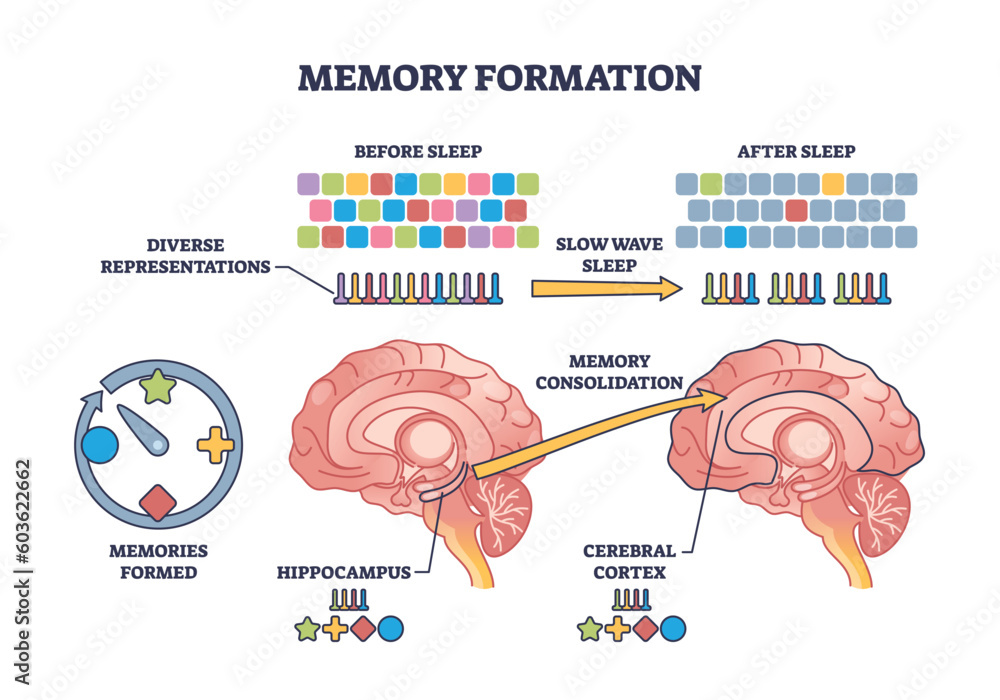
U.S. Innovation Ecosystem: A Model for Global Success
The U.S. innovation ecosystem stands as a beacon of progress and ingenuity, setting a formidable example on the global stage. Its roots trace back to pivotal moments, such as World War II, when government funding research fueled transformative breakthroughs in health like the mass production of penicillin. This synergy between academia and industry, bolstered by robust public-private partnerships, has been crucial in fostering advancements in biomedical innovation. Today, as scrutiny mounts over federal funding allocations, particularly for research initiatives under the National Institutes of Health, it is essential to recognize the historical context of these collaborations. Ongoing science policy reforms will play a vital role in shaping the future trajectory of the U.S. innovation ecosystem and its ability to confront modern challenges.
The dynamic landscape of America’s inventive landscape reflects a complex interplay of academia, government, and industry. Often referred to as the innovation hub of the world, this system emerged significantly during wartime, marking a critical shift in research and development paradigms. Historical evidence highlights that initiatives like the wartime Office of Scientific Research and Development not only addressed immediate needs but also laid a solid framework for future advancements in areas such as biomedical sciences and technology. Key to this evolution has been the emphasis on public-private sectors working hand in hand, catalyzing a surge in scientific training and discovery. As we navigate contemporary challenges, understanding the foundational aspects of this ecosystem remains vital for continued progress.
The Foundations of the U.S. Innovation Ecosystem
The U.S. innovation ecosystem is a unique amalgamation of academia, industry, and federal initiatives, each playing a critical role since its inception during World War II. Early efforts began when university leaders and R&D laboratories presented a compelling case to President Roosevelt, highlighting the need for advanced scientific capabilities to support military operations. This partnership catapulted the nation into a realm of technological advancements, fostering collaboration that not only contributed to winning the war but also initiated a culture of public-private partnerships unprecedented in scope and ambition. The interplay between government support and academic research provided the bedrock for developments in fields such as biomedical innovation, laying the groundwork for future discoveries.
By establishing mechanisms for federal funding and oversight, the government enabled scientists and researchers to tackle pressing challenges, ranging from disease management to technological breakthroughs. This innovative environment attracted talented individuals and institutions, who embraced the challenge of turning research into practical applications. Consequently, as the war progressed and medical needs intensified, organizations like the Office of Scientific Research and Development (OSRD) became instrumental in implementing policies that would shape the future of biomedical research and technology. Their executive strategies not only streamlined funding processes but also incentivized universities and industries to prioritize research and development in essential areas.
The Role of Government Funding in Research
Government funding has historically been a cornerstone of scientific progress in the U.S., with its significance surging during World War II. The urgency of wartime needs propelled an evolution in science policy, creating a framework for sustained investment in research initiatives. As the war revealed the devastating impact of infectious diseases on military readiness, the necessity for biomedical innovation swiftly became apparent. This awakening led to substantial investments in academic research and development projects, paving the way for major breakthroughs such as the mass production of antibiotics. The relationship between federal funding and successful biomedical outcomes serves as a testament to the critical role governmental support plays in facilitating advancements.
Today, the debate surrounding government funding continues, especially regarding the fairness and efficacy of reimbursement for indirect research costs. As highlighted in recent discussions, the potential cap on such reimbursements poses risks not only to institutions reliant on NIH funding but also to the broader biomedical innovation ecosystem. It is pertinent to remember that federal research funding is not merely a line item in the budget but a vital catalyst for innovation that drives national health outcomes, economic growth, and technological leadership. Preserving this relationship is essential to maintaining the U.S. position as a leader in global scientific advancements.
Public-Private Partnerships: A Model for Success
Public-private partnerships (PPPs) have emerged as a particularly effective model within the U.S. innovation ecosystem. The collaborative efforts among government entities, private companies, and academic institutions have resulted in streams of innovation that inform both national policy and scientific discovery. From the onset of the war, the necessity of these partnerships became clear as wartime challenges demanded solutions that could only arise through the combined strengths of each sector. The structure of these partnerships has evolved, but their core principle remains: harnessing the unique capabilities and resources of each participant to achieve a common goal.
Particularly in biomedicine, public-private partnerships have proven essential in advancing research agendas, leading to significant health innovations and improved clinical practices. These collaborative arrangements allow for shared investment in high-risk research that might not attract private funding alone, thereby expanding the scope of potential breakthroughs. The enduring success attributed to the synergy of government and private industry continues to serve as a global model for fostering innovation, catalyzing multilateral collaborations that address complex health challenges while driving economic development.
Biomedical Innovation: Lessons from History
The story of biomedical innovation in the U.S. during World War II teaches us profound lessons about the intersections of science, urgency, and societal needs. The war catalyzed a rapid emergence of solutions to pressing health concerns, such as the fight against infectious diseases that claimed countless lives and threatened operational effectiveness. The collaboration between scientific researchers and military needs established a precedent for how targeted research within the biomedical field could yield substantial benefits, demonstrating that time-sensitive problems often require innovative approaches to advance quickly and effectively.
In analyzing the historical context of this development, it becomes clear that the early investments made during World War II created a resilient infrastructure that has enabled the US to maintain its leadership in biomedical research. This foundational period saw significant advancements in drug discovery and production, notably the commercial availability of penicillin. The framework established then paved the way for contemporary models of medical research, and its lessons still resonate—reminding us that strong institutional support, coupled with scientific inquiry driven by immediate needs, can lead to seamless transitions from laboratory research to real-world medical application.
Science Policy Reforms: Ensuring Continued Growth
As we reflect on the trajectory of the U.S. innovation ecosystem, science policy reforms are essential to ensuring sustainable growth in research and development. The continuous evolution of regulations and funding structures must adapt to the changing landscape of global competition in biomedical sciences. Policymakers are faced with the challenge of maintaining funding levels while also addressing the pressing demands of emerging public health crises. Therefore, an effective science policy must strike a balance between accountability and flexibility, fostering an environment that encourages innovation without sacrificing necessary oversight.
Moreover, the current discourse around science policy reform must also consider the influence of stakeholders within the public and private sectors. As evidenced by ongoing debates surrounding federal funding allocations and reimbursement for indirect costs, the future of U.S. biomedical innovation depends on protecting the foundational principles established during earlier eras. By prioritizing collaboration and strategic investment, reforms can catalyze a revitalized atmosphere that not only strengthens the innovation ecosystem but also reaffirms the U.S. commitment to being at the forefront of global scientific advancement.
Maintaining the Enviable U.S. Biomedical Ecosystem
The U.S. biomedical ecosystem has garnered admiration worldwide for its capacity to yield significant advances in health and medicine. As policymakers engage in discussions about future funding and operational strategies, their decisions will shape the direction of this ecosystem for years to come. The integration of government-sponsored research with academic scholarship and industry capabilities has created a web of innovation that effectively translates scientific discoveries into practical applications. This revered system, however, must be carefully maintained to avoid disruptions that could threaten its effectiveness.
Key elements contributing to the system’s success include the strong cooperation between government entities and private research firms, alongside a steady influx of federal funding. Continued investment is crucial to nurture a workforce of skilled researchers and to support ground-breaking projects that contribute to national health priorities. Sustaining this biomedical ecosystem not only enhances public health outcomes but also fortifies the U.S. position in the global arena. Protecting this collaborative framework ensures the ongoing quest for scientific advancements that resonate well beyond the walls of laboratories.
Impact of World War II on Modern Science
World War II was a catalytic moment for modern science, particularly in the field of biomedical research. It provided a unique opportunity for the government, academia, and the private sector to collaborate under pressing circumstances. The war highlighted the critical need for rapid advancements in medical technology and treatments, necessitating a concerted effort from diverse scientific disciplines and institutions. This sense of urgency led to initiatives that not only saved lives during the conflict but also established a robust framework that would support continued innovation in medicine long after the war ended.
The organizational shifts and methodologies implemented during this time laid the foundation for contemporary biomedical innovation. The establishment of agencies such as the OSRD, which managed and coordinated research efforts, set a precedent for effective public administration in the biomedical realm. Furthermore, the lessons learned from wartime challenges inform current policies and funding strategies, which continue to play a crucial role in enhancing the efficiency and relevance of biomedical research. Thus, World War II remains a significant chapter that continues to shape and inspire modern scientific approaches to solving global health issues.
The Future of the U.S. Innovation Ecosystem
As we look to the future, the U.S. innovation ecosystem faces both opportunities and challenges. The dynamic interaction between government support, academic research, and private industry must be sustained and adapted to keep pace with rapid technological advancements and emerging health threats. Embracing interdisciplinary collaboration and investing in strategic partnerships can further amplify the accomplishments of the U.S. biomedical sector. As the world grapples with complex health crises, fostering a resilient ecosystem will be increasingly essential.
Moreover, policymakers must remain vigilant to the evolving needs of researchers and practitioners within this ecosystem. This involves steadfast support for biomedical innovation and the active incorporation of diverse perspectives in legislative and funding decisions. Ensuring an equitable distribution of resources while also promoting a culture of innovation will highlight the value of the U.S. ecosystem on a global scale. Ultimately, nurturing this environment will not only enhance the nation’s health outcomes but will also solidify its reputation as a leader in scientific excellence.
The Importance of Continued Investment in Biomedical Research
Investment in biomedical research plays a pivotal role in driving advancements that significantly improve public health outcomes. As demonstrated throughout history, robust funding mechanisms facilitate groundbreaking discoveries and the development of new therapies. The U.S. innovation system, grounded in public-private partnerships, thrives on this financial commitment to support extensive research initiatives. Consequently, ongoing investment in the biomedical sector is paramount for fostering innovation that can address existing health challenges and anticipate future needs.
Furthermore, as the landscape of health issues evolves with emerging diseases and environmental factors, the need for sustained financial backing becomes ever more pronounced. Policymakers must recognize that prudent investments in research today will yield exponential benefits in health management and disease prevention in the future. This strategic approach not only protects public health but also ensures the continued success and growth of the U.S. biomedical ecosystem as a whole. The long-term dividends from these investments underscore the critical importance of steadfast commitment to scientific inquiry and innovation.
Frequently Asked Questions
How did the U.S. innovation ecosystem evolve from World War II research?
The U.S. innovation ecosystem, particularly in biomedical innovation, evolved significantly during World War II when the government prioritized research to address urgent military needs. This led to public-private partnerships that engaged universities and private firms, which became foundational for advancements in technology and medicine, establishing the framework for the current U.S. innovation system.
What role do public-private partnerships play in the U.S. innovation ecosystem?
Public-private partnerships are crucial in the U.S. innovation ecosystem as they facilitate collaboration between government entities, academia, and industry. These partnerships drive innovation, especially in biomedical research, by leveraging diverse resources and expertise to tackle complex challenges and accelerate the development of new technologies and therapies.
What impact did government funding research have on biomedical innovation in the U.S.?
Government funding research has profoundly impacted U.S. biomedical innovation by providing financial resources that support academic research, leading to breakthroughs in health technologies and treatments. This funding has historically fueled advancements that enhance public health and strengthen the nation’s health security.
How did World War II research shape the current biomedical innovation landscape in the U.S.?
World War II research laid the groundwork for the current U.S. biomedical innovation landscape by establishing a collaborative model among government, universities, and industry. The successes achieved during the war, such as the mass production of penicillin, highlighted the importance of R&D investment, which continues to drive innovation today.
What are the main pillars of the U.S. innovation ecosystem in biomedicine?
The main pillars of the U.S. innovation ecosystem in biomedicine include universities, the life sciences industry, and the National Institutes of Health (NIH). These entities collaborate synergistically, enhancing research capabilities, driving innovation, and improving health outcomes for society.
How does science policy reform affect the U.S. innovation ecosystem?
Science policy reforms can significantly affect the U.S. innovation ecosystem by altering funding structures, prioritization of research areas, and regulatory pathways. Ensuring that these reforms support the existing infrastructure is crucial to maintaining the momentum of innovation, especially in fields like biomedical research.
Why is the U.S. innovation ecosystem considered the envy of the world?
The U.S. innovation ecosystem is considered the envy of the world due to its successful integration of government funding, research institutions, and private industry. This collaboration has led to unprecedented advances in biomedical innovation, technologies, and therapies, setting a global benchmark for innovation and efficiency.
What lessons can be learned from historical U.S. innovation initiatives?
Historical U.S. innovation initiatives, such as those during World War II, provide valuable lessons on the importance of government support, public-private partnerships, and the urgency of addressing national challenges through coordinated R&D efforts, all of which remain relevant in today’s innovation landscape.
| Key Point | Details |
|---|---|
| Origins of the U.S. Innovation Ecosystem | The partnership dates back to World War II when academia and government collaborated to address wartime technological challenges. |
| Role of Penicillin | The mass production of penicillin during WWII is a critical success story symbolizing the effectiveness of this collaboration. |
| Research Funding | Federal funding has been instrumental in advancing academic research and fueling private sector development in innovation. |
| Public-Private Partnerships | The partnership model has been credited with significant advances in multiple fields, including biomedicine, by merging talents from different sectors. |
| Influence of WWII | Wartime demands led to new agencies and structures that have supported ongoing technological advancements. |
| Long-term Effects | The foundations laid during the war established a robust biomedicine sector that continues to innovate and thrive today. |
Summary
The U.S. innovation ecosystem is a remarkable and enviable model of collaboration between government, academia, and industry. Rooted in the exigencies of World War II, this partnership has evolved into a dynamic system that produces groundbreaking advancements in biomedicine and other industries. As the system adapts to contemporary challenges and potential funding reforms are debated, it remains essential to recognize and protect the collaborative spirit that has driven decades of innovation. The success of the U.S. innovation ecosystem is not just a national asset but a global benchmark for fostering technological advancements and economic growth.


